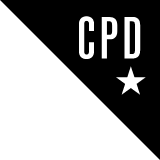Why public relations should be wary of “sleepwalking into a technological future”
With the new possibilities offered by Microsoft's OpenAI ChatGPT and related offerings potentially affecting over 90 per cent of PR skills, is it time for wholesale adoption of the technology across the industry? Jon White takes a closer look
Since the launch of Microsoft's OpenAI ChatGPT in November last year, there has been an explosion of interest in the application of this development in artificial intelligence to public relations practice.
A report by PRovoke Media and Sandpiper, published in April, surveyed practitioners around the world and found that 61 per cent are currently using AI in their work, and 89 per cent expect the use of AI to be "business as usual" in a matter of months.
In a useful glossary in the report, ChatGPT is defined as "A generative AI large language model (LLM) developed by OpenAI that is trained on a massive dataset of text and can generate responses to a wide range of prompts, making it useful for chatbot applications and other natural language processing tasks."
In a more straightforward description, ChatGPT responds to prompts or questions and produces answers to them, plans and suggestions. Other companies such as Google have introduced competing capabilities.
In one of many articles examining the potential uses of ChatGPT, Newsweek - in an article (How ChatGPT is Transforming the PR Game, March 2023) suggested that practitioners not using the new capabilities of AI are wasting their precious time.
"Education and training will be critical for the comms industry to maximise the opportunities AI presents while managing the risks"
Stepping back from current developments, it is important to maintain perspective and recognise that since the emergence of modern public relations practice, it has adapted to and incorporated technological capabilities into its work from its beginning.
Over the last 50 years, these have included improved word processing capabilities, new possibilities for content transmission, accessible computing capacity, the development of the internet, smartphones, and the channels available through social media.
All have been incorporated into practice and, to a degree, define modern practice.
Some rate the emergence of new AI capabilities as likely to transform practice. Against this, the PRovoke study "underlines a key challenge that is plaguing many - that the technologies are so new that in fact, no one has yet figured out how to integrate them effectively into daily working practices."
Andrew Bruce Smith, chair of the UK's Chartered Institute of Public Relations (CIPR) AI in Public Relations Panel, and Stephen Waddington, founder of PR advisory firm Wadds Inc., co-authored CIPR's study of the impact of AI tools on public relations. Published earlier this year, it also suggests that "it's extremely difficult to make hard and fast predictions about the exact impact of AI on the public relations industry over the next 12 months, let alone the next five years. If anything can be said with any certainty, it is that AI technology will continue to offer ever more varied capabilities and use cases that will have an impact on the profession."
In conversation, Bruce Smith refers to a 2018 CIPR study on the possible uses for AI which concluded that humans will still be necessary and that not all tasks will be taken over by applications of AI. At that time, the study concluded that of the 52 skills identified in a global study of capabilities required in public relations practice, AI would affect 12 per cent of these skills, a percentage that would rise to 38 per cent by 2023.
Now, with the new possibilities offered by ChatGPT and related offerings, he would put the figure as high as 90-plus per cent.
Public relations roles and problem-solving
The new possibilities for public relations practice raise immediate questions about how the practitioner's role may change, going forward.
Early studies of the possible roles of public relations practitioners by the US researchers Glen Broom and David Dozier identified a pattern like that found in other occupational groups.
Entrants to the practice operate initially as technicians, applying technical skills in their work - producing copy, rudimentary plans and executing detailed tasks as part of larger projects.
Progression over time is into managerial roles - Broom and Dozier identified roles at this level, described as an expert prescriber role, where experienced practitioners can offer timely advice and ‘prescribe' solutions.
The other role identified as managerial was what they described as collaborating with employers or clients through a process of problem-solving to solutions (a problem-solving process facilitator). This latter role, whether as a member of a senior management team or a high-level external advisor, is essentially a consultant's role.
To some extent, all practitioners - even those working at a technical level - are consultants. Consultancy is a professional relationship between consultant and client aimed at the solution of client problems. As an aside, problems are not seen as negative, but rather as a situation, or development requiring some action: how to clarify and capitalise on an opportunity, for example.
In a seminal article on consultancy practice from 1982 written by Arthur John Camillus Turner, Consultancy is More than Giving Advice, a hierarchy of consultancy purposes identified several levels at which consultancy advice can be given:
1. Providing information to a client
2. Solving a client's problems.
3. Making a diagnosis, which may necessitate a redefinition of the problem.
4. Making recommendations based on the diagnosis.
5. Assisting with the implementation of recommended solutions.
6. Building a consensus and commitment around activities.
7. Facilitating clients - that is, teaching clients how to resolve similar problems in the future.
8. Permanently improving organisational effectiveness.
Moving up the pyramid, through the traditional purposes of consulting (points 1 to 5), towards more ambitious purposes requires, as Turner says, "increasing sophistication and skill in the processes of consulting and in managing the consultant-client relationship."
The processes of consulting involve reaching an agreement with clients regarding the problems they face as a preliminary step to agreeing on actions to be taken to deal with problems identified. Diagnosis involves asking the right questions and using data to arrive at an agreement.
One of the difficulties faced in public relations practice is that issues facing employing organisations and clients often fall into the category of "wicked problems".
These, described by John Camillus in the Harvard Business Review, "often crop up when organisations have to face constant change or unprecedented challenges. They occur in a social context, the greater the disagreement among stakeholders, the more wicked the problem. It is the social complexity of wicked problems as much as the technical difficulties that make them tough to manage. Not all problems are wicked; confusion, discord, and lack of progress are telltale signs that an issue might be wicked."
Camillus identifies five criteria defining wicked problems:
- it involves many stakeholders with conflicting priorities
- its roots are tangled
- it changes with every attempt to address it
- it has never been faced before and
- there is no way to evaluate whether or not a remedy will work.
Current examples might include the "small boats" immigration problem facing the UK government and increasing demand for services from the National Health Service - both problems identified as priorities in the UK Government Communication Service's current communication plan (which also commits the service to make full use of the new capabilities offered by AI).
Benefits of using AI in public relations practice
The possibilities opening up for public relations practice because of the new AI capabilities are recognised. It is clear, looking at the roles played by public relations practitioners and their part in problem-solving through consultancy that AI can contribute at several points to increase the efficiency and effectiveness of practice.
Improving role performance will be possible earlier in all the roles identified for practitioners, largely due to using AI to aid in the completion of routine tasks such as media analysis and content creation, and freeing time for first asking more precise questions of datasets and clients and their expectations.
Andrew Bruce Smith emphasises that practitioners drawing on the capabilities of the new AI tools will have to have a "domain expertise" to draw on to enable them to assess the value of the answers received. The process of using AI to refine current practice will need to be iterative and will depend on refining questions asked, to work towards better, more useful answers.
"More than 7 in 10 say they would like more training around AI technologies as they relate to communications"
An immediate requirement in practice is for training to address knowledge gaps, identified in the PRovoke Media and Sandpiper study. It states that "given the knowledge gaps, investments in education and training will be critical for the communications industry to maximise the opportunities AI presents while managing the risks."
"Given the knowledge gaps," the study concludes, "investments in education and training will be critical for the communications industry to maximise the opportunities AI presents while managing the risks. Nearly half of our respondents (49%) do not believe their company is doing enough to educate its employees about AI and how it will impact the industry. The same number also say their employer is not doing enough to educate them about the governance and ethical risks surrounding AI technologies. To quantify this, more than 7 in 10 (71%) say they would like more training around AI technologies as they relate to communications while 61% think their employer should be investing more time and resources into integrating AI technologies into standard practice."
AI, considering recent developments, presents enormous opportunities for practice as well as large ethical questions. What we must avoid, as University of Huddersfield professor Anne Gregory makes clear in a 2021 CIPR study about the readiness of the public relations industry for an AI future, is "sleepwalking into a technological future".
Introduction To Artificial Intelligence (AI) In PR
https://www.cipr.co.uk/CIPR/Events/Event_Display.aspx?EventKey=IAI200923&WebsiteKey=0379ffac-bc76-433c-9a94-56a04331bf64


